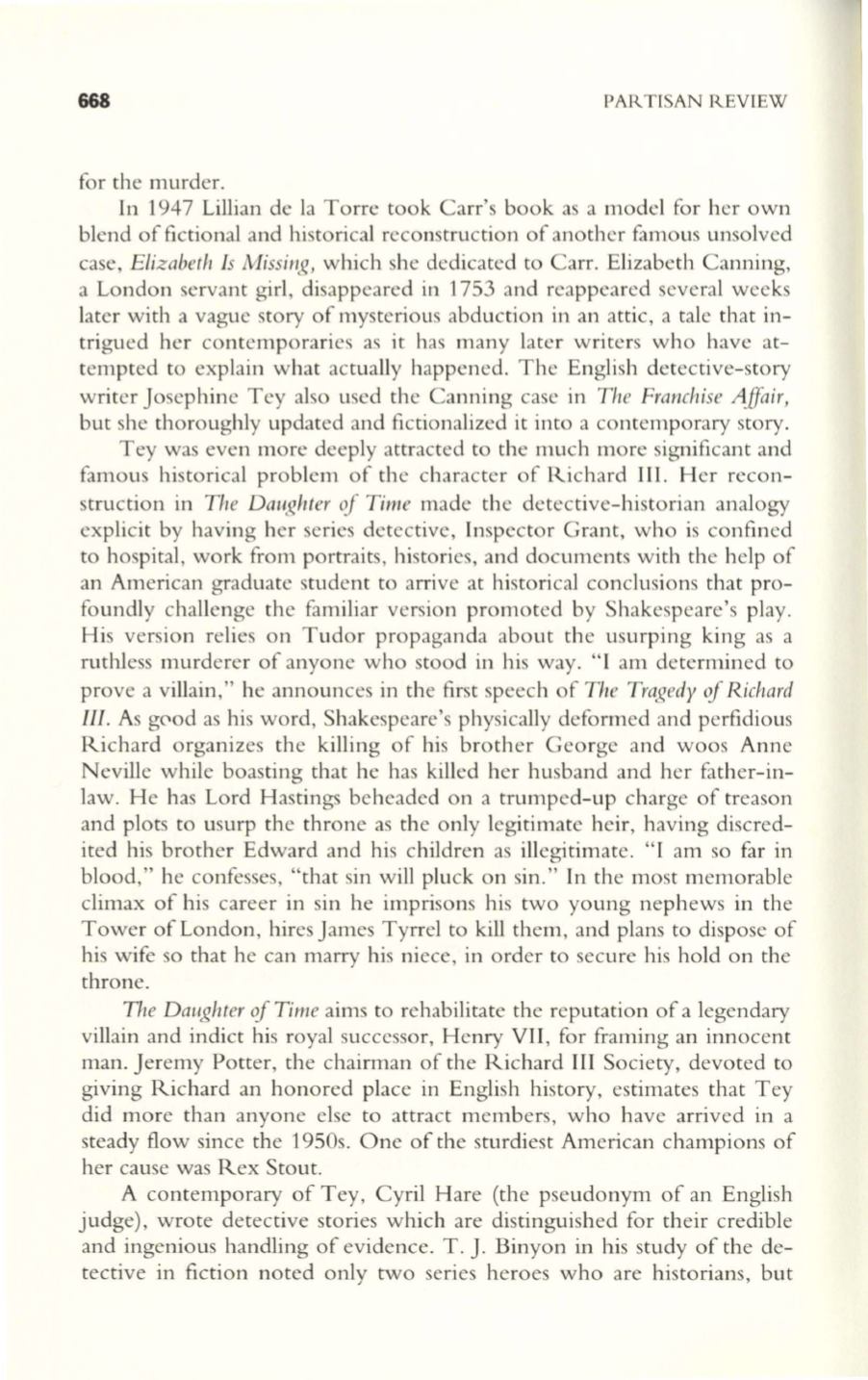
668
PARTISAN REVIEW
for the murder.
In 1947 Lillian de la Torre took Carr's book as a model for her own
blend of fictional and historical reconstruction of another famous unsolved
case,
Elizabeth Is Missing,
which she dedicated to Carr. Elizabeth Canning,
a London servant girl, disappeared in 1753 and reappeared several weeks
later with a vague story of mysterious abduction in an attic, a tale that in–
trigued her contemporaries as it has many later writers who have at–
tempted to explain what actually happened. The English detective-story
writer Josephine Tey also used the Canning case in
The Franchise Affair,
but she thoroughly updated and fictionalized it into a contemporary story.
Tey was even more deeply attracted to the much more significant and
famous historical problem of the character of Richard
III.
Her recon–
struction in
The Daughter of Time
made the detective-historian analogy
explicit by having her series detective, Inspector Grant, who is confined
to hospital, work from portraits, histories, and documents with the help of
an American graduate student to arrive at historical conclusions that pro–
foundly challenge the familiar version promoted by Shakespeare's play.
His version relies on Tudor propaganda about the usurping king as a
ruthless murderer of anyone who stood in his way. " I am determined to
prove a villain," he announces in the first speech of
The Tragedy of Richard
III.
As good as his word, Shakespeare's physically deformed and perfidious
Richard organizes the killing of his brother George and woos Anne
Neville while boasting that he has killed her husband and her father-in–
law. He has Lord Hastings beheaded on a trumped-up charge of treason
and plots to usurp the throne as the only legitimate heir, having discred–
ited his brother Edward and his children as illegitimate. "I am so far in
blood," he confesses, "that sin will pluck on sin." In the most memorable
climax of his career in sin he imprisons his two young nephews in the
Tower of London, hires James Tyrrel to kill them, and plans to dispose of
his wife so that he can marry his niece, in order to secure his hold on the
throne.
The Daughter
if
Time
aims to rehabilitate the reputation of a legendary
villain and indict his royal successor, Henry VII, for framing an innocent
man. Jeremy Potter, the chairman of the Richard III Society, devoted to
giving Richard an honored place in English history, estimates that Tey
did more than anyone else to attract members, who have arrived in a
steady flow since the 1950s. One of the sturdiest American champions of
her cause was Rex Stout.
A contemporary of Tey, Cyril Hare (the pseudonym of an English
judge), wrote detective stories which are distinguished for their credible
and ingenious handling of evidence. T.
J.
Binyon in his study of the de–
tective in fiction noted only two series heroes who are historians, but


